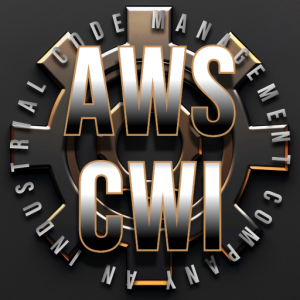Leading Tips for Effective Welding Inspection in Gilbert Arizona: A Comprehensive Guide
Leading Tips for Effective Welding Inspection in Gilbert Arizona: A Comprehensive Guide
Blog Article
Checking Out the Importance of Welding Evaluation in Industrial Applications: Safeguarding Against Failings and Enhancing Longevity
Welding examination serves as an important line of protection in industrial applications, making sure the architectural stability and integrity of welded elements. By systematically determining defects such as porosity and incomplete combination, inspections not only stop failings however likewise prolong the life-span of vital properties. Following industry requirements improves both safety and operational effectiveness; nevertheless, the effects of overlooking these techniques can be extreme. As we analyze the multifaceted benefits of regular inspections, it ends up being noticeable that recognizing these dynamics is not merely a matter of compliance but a calculated necessary for longevity and risk reduction.
Role of Welding Inspection
Welding assessment offers as an essential secure in industrial applications, guaranteeing that welded frameworks satisfy defined requirements of quality and safety. This procedure includes a systematic examination of welds to verify their integrity, toughness, and conformity with recognized codes and specifications. The duty of welding assessment is multifaceted, encompassing both aesthetic evaluations and non-destructive testing approaches, which may consist of ultrasonic, radiographic, or magnetic bit testing.
Reliable welding assessment identifies possible issues early, minimizing the danger of tragic failings that can develop from inadequate welds. By making certain that welds are performed according to design specs, inspectors add to the overall structural reliability and longevity of parts in critical applications, such as stress vessels, pipelines, and structural frameworks.

Common Welding Issues

One of the most prevalent defects is porosity, identified by tiny gas pockets entraped within the weld steel. This happens due to contaminants or improper securing gas, endangering the weld's strength. Another significant issue is insufficient combination, where the weld metal fails to bond effectively with the base product, possibly causing structural weaknesses.

Fractures can also create during or after the welding procedure, often credited to thermal stress and anxieties or incorrect cooling prices. Furthermore, undercutting, where the base steel is eroded along the weld grain, can deteriorate the joint and is typically triggered by extreme heat input or inaccurate method.
Moreover, lack of infiltration happens when the weld steel does not reach the origin of the joint, bring about poor toughness. Understanding these usual problems is critical for welders and examiners alike to make sure that welded frameworks meet security and efficiency requirements, inevitably protecting against possible failures in commercial applications.
Benefits of Normal Inspections
Routine examinations serve as a vital safeguard in making sure the integrity and longevity of welded frameworks. These analyses identify prospective flaws and weak points that might endanger the integrity of welds, enabling for prompt removal prior to concerns escalate. By executing an organized inspection routine, organizations can substantially lower the threat of catastrophic failures that may cause pricey downtime, tools substitute, or perhaps accidents.
Furthermore, regular evaluations contribute to boosted quality assurance throughout the welding procedure. By sticking to a regular examination timetable, firms can make certain that their welding techniques meet recognized high quality benchmarks and best practices. This not just cultivates a society of liability but likewise urges constant enhancement among welding personnel.
Additionally, normal examinations facilitate better upkeep preparation. By determining wear and tear early, companies can purposefully arrange repair services and substitutes, minimizing disturbance to procedures. This positive approach inevitably causes extended possession lifespan and boosted general productivity.
Lastly, a dedication to regular assessments can boost a firm's track record in the market. Customers and stakeholders significantly value companies that prioritize security and quality, consequently enhancing count on and possibly causing enhanced organization opportunities.
Market Requirements and Laws
Following sector standards and guidelines is an essential facet of welding inspection that matches the advantages of normal assessments. These requirements, developed by organizations such as the American Welding Culture (AWS) and the American Culture of Mechanical Designers (ASME), supply a framework for finest techniques in welding procedures, materials, and assessment techniques. Compliance with these guidelines makes certain that welds fulfill the required quality and security criteria, dramatically minimizing the threat of architectural failings.
Regulatory bodies like the Occupational Safety and Health Administration (OSHA) even more impose guidelines that shield workers and the environment throughout welding procedures. By adhering to these developed criteria, sectors can boost the reliability of their structures and components, guaranteeing they execute as planned under numerous functional conditions.
Moreover, adherence to market standards fosters uniformity in top quality control, promoting smoother communication among stakeholders and regulatory agencies. This placement not only reduces liability threats yet likewise enhances the trustworthiness of organizations in open markets. Welding Inspection Gilbert Arizona. Eventually, compliance with welding standards and laws click here to find out more is not just a legal obligation; it is an essential financial investment in security, efficiency, and long-term operational success
Future Trends in Welding Assessment
As markets continue to evolve, the future of welding examination is positioned to integrate advanced modern technologies that improve precision and effectiveness. One of one of the most considerable fads is the fostering of automation and robotics in examination procedures. Automated systems can conduct examinations rapidly, lowering human error and increasing throughput in producing environments.
In addition, the combination of expert system (AI) and device understanding algorithms will certainly enable predictive analytics, enabling real-time assessments and proactive upkeep. By analyzing data from previous examinations, these technologies can determine patterns that can indicate prospective failings, thus expanding the lifespan of welded parts.
Additionally, non-destructive testing (NDT) methods are anticipated to become much more sophisticated, using tools such as drones and independent cars outfitted with sophisticated sensors. Welding Inspection Gilbert Arizona. These advancements will certainly boost the ability to examine unsafe or hard-to-reach locations without compromising safety
Moreover, the pattern in the direction of digitalization will certainly bring about boosted information management systems that facilitate better about his tracking, reporting, and compliance with industry standards. In summary, the future of welding evaluation is defined by technological developments that guarantee to substantially enhance dependability, safety and security, and operational efficiency in different industrial applications.
Conclusion
To conclude, welding assessment serves an important function in guaranteeing the stability and longevity of bonded frameworks across numerous commercial applications. By identifying problems such as porosity and incomplete blend, normal assessments play a considerable function in risk mitigation and top quality guarantee. Adherence to market standards and regulations better improves operational safety and security and dependability. As developments in technology remain to progress, the future of welding assessment promises raised precision and efficiency, inevitably contributing to the durability of vital infrastructures.
Welding inspection serves as a critical line of protection in commercial applications, making sure the architectural stability and dependability of welded elements.Welding examination serves as an essential guard in industrial applications, guaranteeing that welded structures fulfill defined standards of high quality and safety and security. Eventually, the role of welding see here inspection is vital in promoting safety, improving efficiency, and protecting investments in industrial framework.
These standards, developed by organizations such as the American Welding Society (AWS) and the American Society of Mechanical Engineers (ASME), supply a structure for ideal techniques in welding procedures, materials, and evaluation methods.In final thought, welding assessment offers an essential feature in ensuring the integrity and sturdiness of bonded frameworks across different industrial applications.
Report this page